Introduction
The aim of the seminar is to implement ideas promoting circular urban design strategies in the growing and upcoming 22@ District of Barcelona. The 22@ district is also known as the innovation district, originally an industrial urban tissue that now harbors new knowledge-intensive activities in terms of business and education. It encourages new startups and ventures keeping intact the physical heritage of the district. It provides a perfect platform for the future keeping in mind the present and the past.

Context
Barcelona is well known all around the world for its culture, food, climate, architecture, and urbanism and thus caters to a lot of tourists. The tourism industry plays a major role in the economy of the City as well as the state of Catalonia. One of the most convenient giant ways to go around Barcelona for the tourist is the Barcelona City Tourist Bus. The bus has the hop-on hop-off facility which means you can get down at any spot of your interest on the given route and later get in at the same stop in another bus to complete the trip. The bus service thus attracts around 2 million tourists annually.
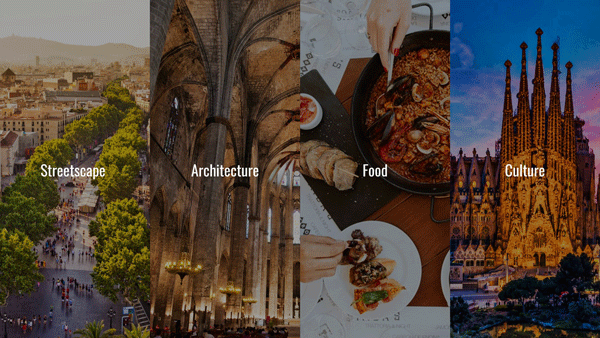
This bus service has 3 major routes namely the red route going through the city center, the blue route going through the north of the city, and the green route going along the beaches of Barcelona. For the purpose of the study, we decided to concentrate on the green route as it is the one that is temporarily closed and passes close to the innovation district.
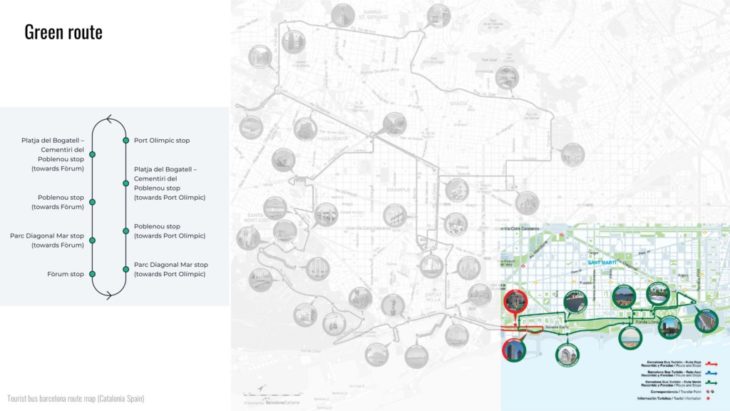
The idea is to change the green bus route so that it passes through the innovation district showcasing the new Barcelona to the tourists. To achieve this goal we went ahead analyzing different aspects of the Sant Marti district which houses the 22@ district.

After analyzing the district we understood that the Avinguda diagonal acts as a central spine of the district and the 22@district are spread on both sides of this spine. This meant that the Avinguda diagonal could be the space of intervention that brings both sides of the innovation district together. To confirm our contemplation we did a site visit from Parc Glories to the Natural Museum of Science.
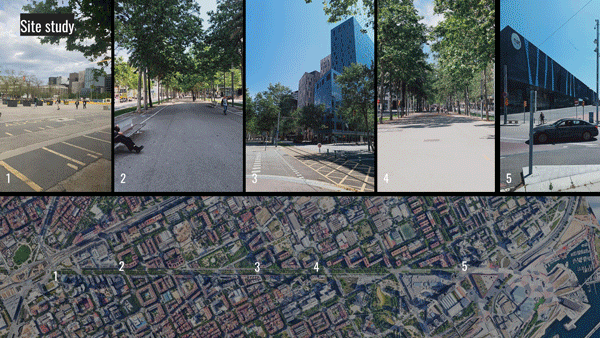
At the same time, we tried to understand how different rambles in Barcelona work and the factors that drive them to be such lively and vibrant streets. Las Rambla, the most famous Ramblas of all is the oldest and strongest in the cultural context, While Ramblas de mar is famous because of its presence of the port, Ramblas de Catalunya is famous for its retails and Rambla de Poble Nou is known as the Ramblas of the locals. So the question arises of how the Avinguda diagonal could represent its own identity while maintaining the characteristics of the Ramblas of Barcelona.
The entire project now revolves around displaying the image of this new Barcelona, the innovative Barcelona on the Rambla of Avinguda diagonal to the locals and the tourist by redirecting the green route. The idea is to use the different stakeholders of the 22@ districts to showcase their work on the street whilst promoting and advertising themselves, the innovation district, and Barcelona’s new image.
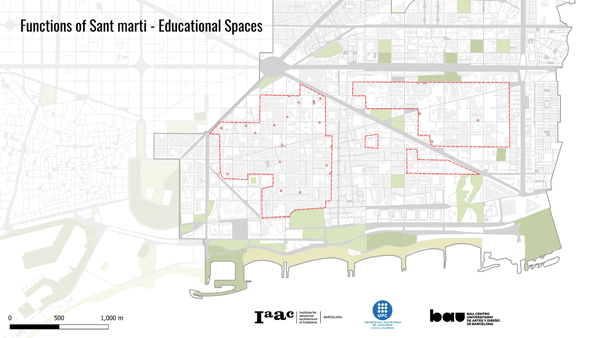
To achieve this goal we came up with three major themes namely Retail, Tech, and Culture that would be applied over four different zones of the Rambla namely Exhibit Farm to the table, Cul-tech, and Glories Hub zones.

Interventions
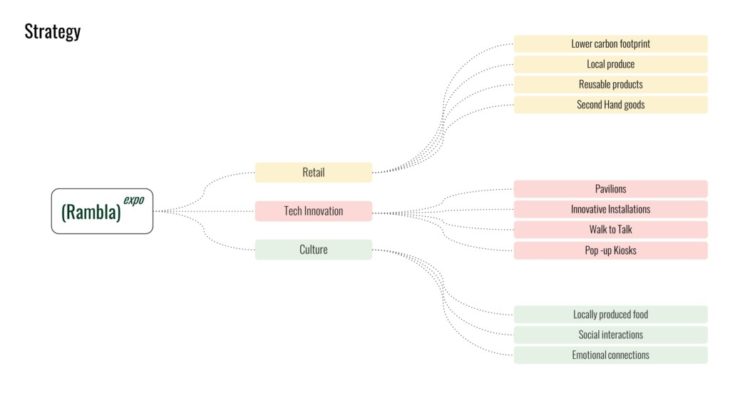
Stop 1. Exhibit Zone
The First stop of the Tourist bus is the Museum of Natural History. The area is surrounded by well-paved walkways, our intervention identified certain stakeholders that could support the activities introduced. This zone highlights activities of open NFT art galleries, Exhibition pavilions which could not only showcase the works of artists but also the works of the art, architecture, and design school in the 22@ district.
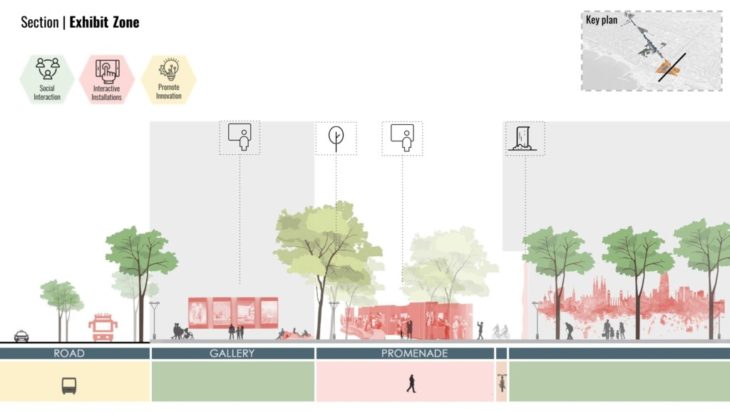
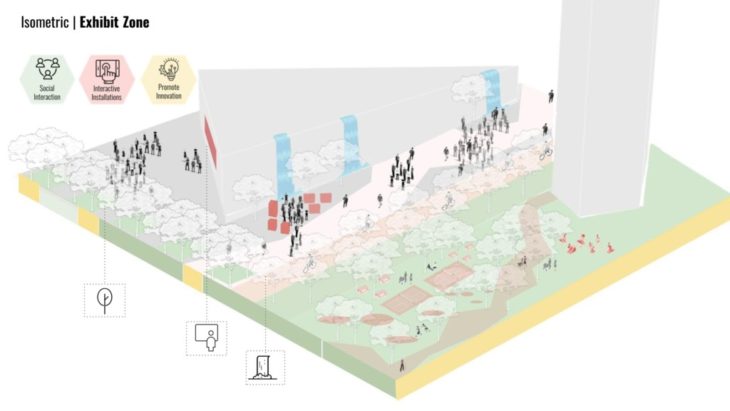
Stop 2. Farm to Table
The second stop of the Tourist bus is Selva del Mar. Our second stop focuses more on social interaction, food production & local retail. The presence of local residents and the school children and the park around us could decipher the need for social interaction. We converted the existing on-ground parking into urban terrace farming activities for the locals and with the cafe and restaurants, we created a food hub that would be using the local produce. For leisure activities, we added a cinema screen that would feature films from the film/3d schools in 22@.
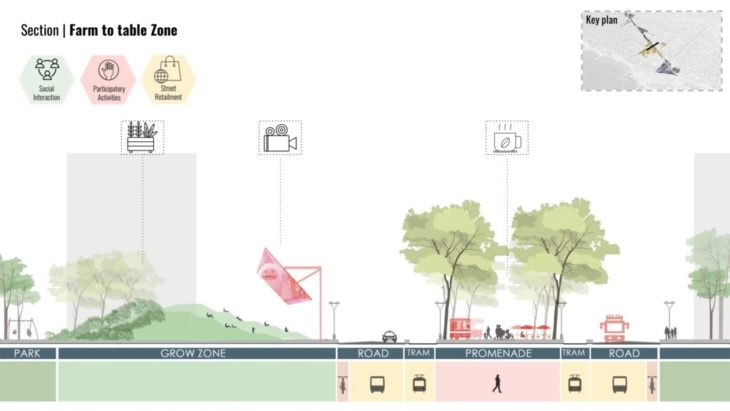
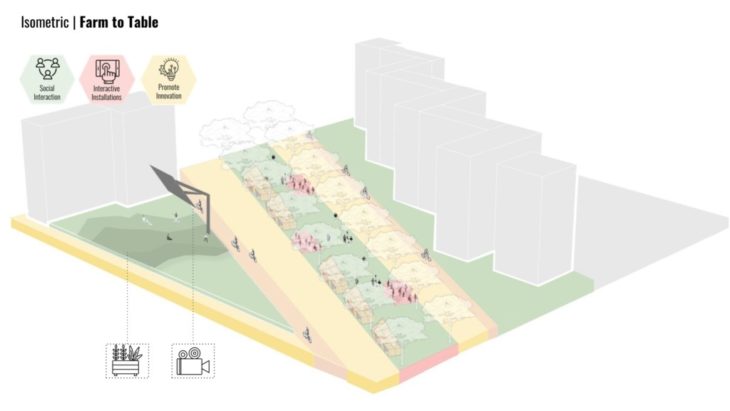
Cul-Tech Zone
The third stop is Parc Central de Poblenou & Rambla de poblenou. It has ample cafes and the park of central poblenou is quite popular. The cul-tech zone has interactive and innovative installations which display the skills of the 22@ which not only engages the tourists but also gives them a chance to be a part of the process. The cul-tech zone works as an innovation idea incubator which is a platform for the locals, 22@ offices, and institutes to discuss and brainstorm ideas.
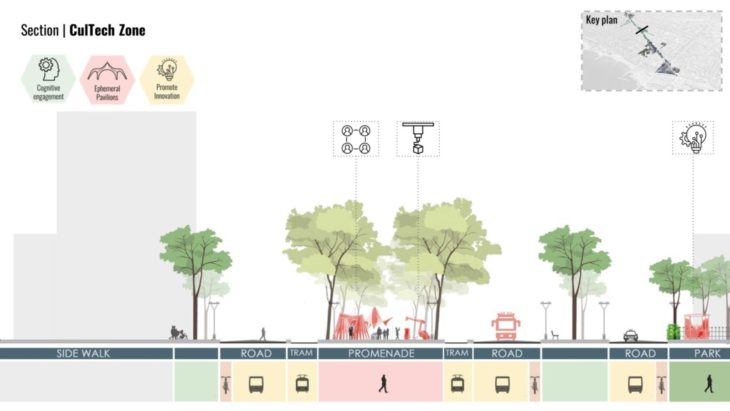
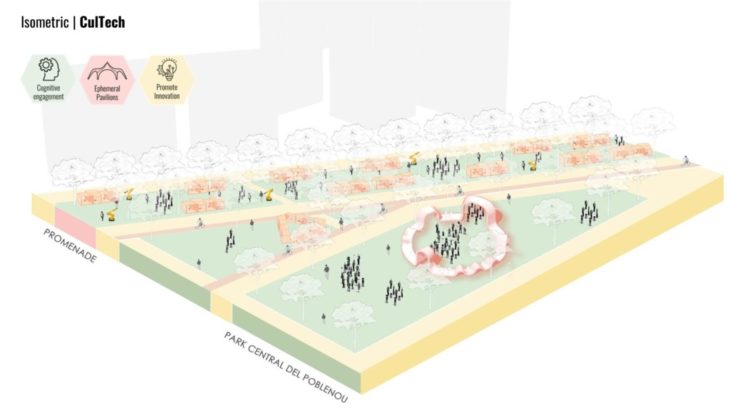
The second part of the Cul-tech zone displays the vibrant culture of Barcelona. It is catering to various age groups. From activities like dancing under the light pavilion to children’s play zones, this culture is also a spot of interaction between the tourists and the locals. The Rambla of Poblenou is popular amongst the locals and hence this zone provides retail and social activities. The main aim of this zone is to connect and expand the Rambla of poblenou to the other sides of the streets.
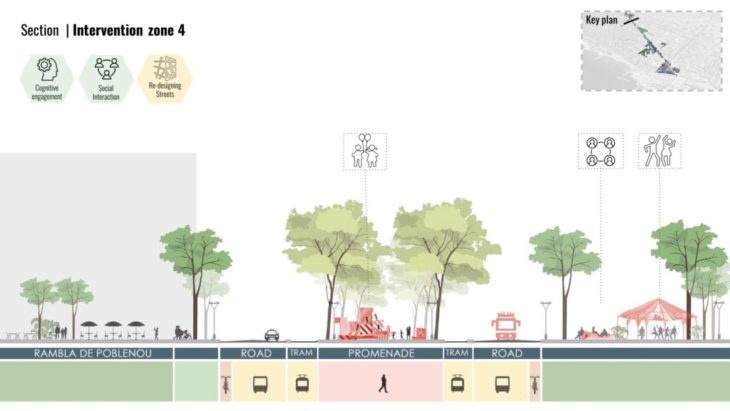
Glories Hub
The Glories Hub is the upcoming center with international train stations. The main goal is to connect the park to the museum premises. This zone displays the grandness of the glories hub with pavilions, light installations, and interactive seating spaces. Moreover, it can act as an extension to the design museum bringing the art displays to the streets and creating a homogenous museum & exhibition experience.
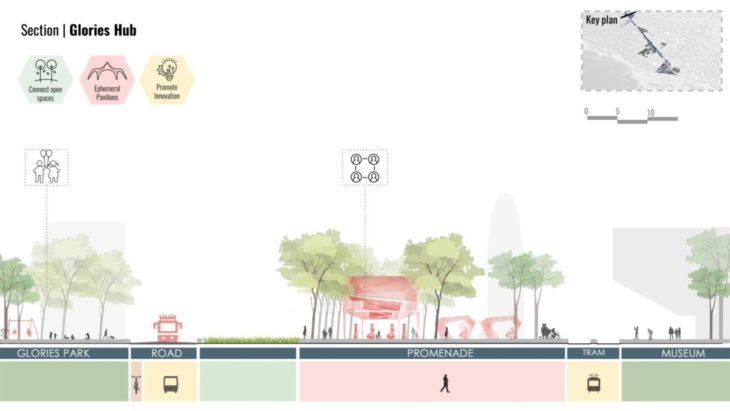
Vision
The proposed green route highlights the 4 zones. It starts from Platja bagatelle being the beach going through the new Rambla with the 5 stops from the museum of natural science to Parc glories and with the final stop being Ciutadella park.
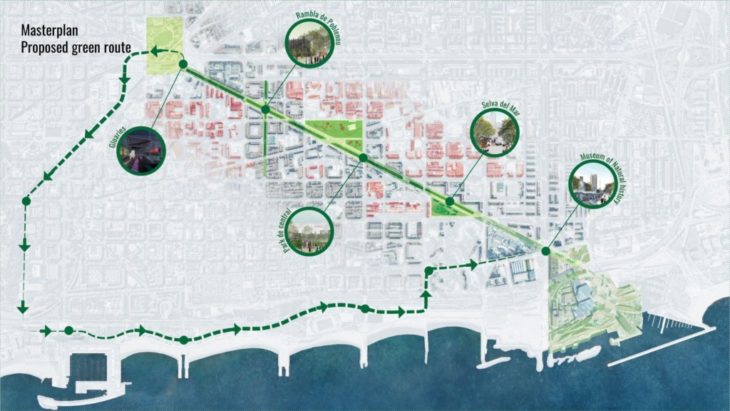
The leaflet for the Rambla Expo, Divided in 4 categories, Art and Installation, Food and beverages, Leisure, and shopping space. This list is open for the future hubs of innovation coming up and advertising innovative districts to further bring in more new investments and business.
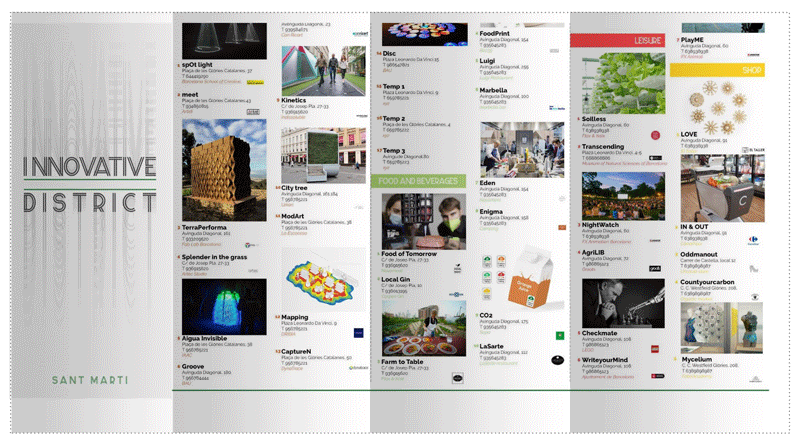
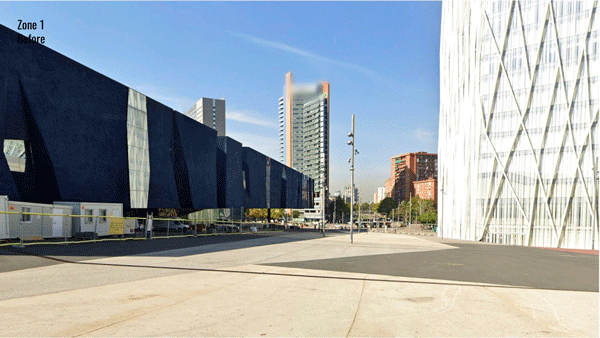
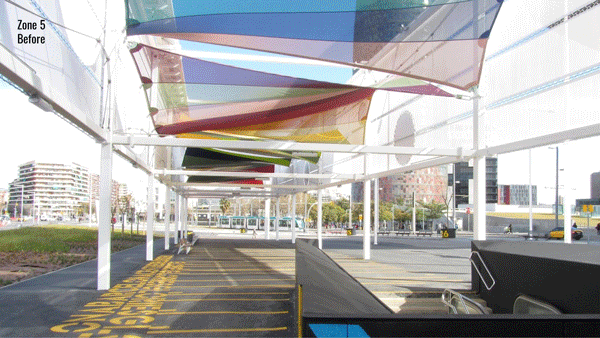
(Rambla)expo is a project of IAAC, Institute for Advanced Architecture of Catalonia developed in the Master in City & Technology 2021/22 by Students: Kishwerniha Buhari, Kriti Nirmal, Lemir Karim Abillama, Maria Magakavali, Pushkar Runwal Faculty: Andy Bow, Bruno Moser & Laura Narvaez Zertuche